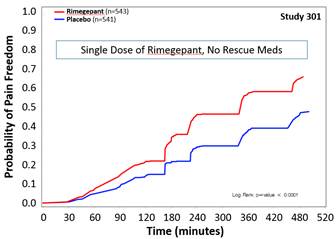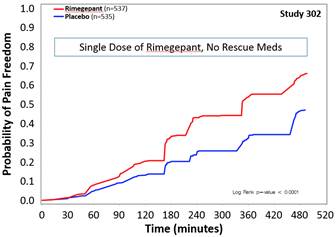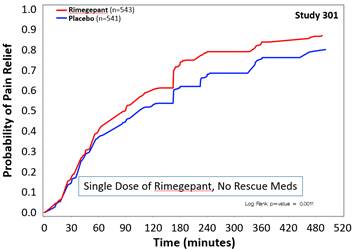UNITED STATES
SECURITIES AND EXCHANGE COMMISSION
Washington, DC 20549
FORM 8-K
CURRENT REPORT
Pursuant to Section 13 or 15(d) of
The Securities Exchange Act of 1934
Date of Report (Date of earliest event reported): March 26, 2018
Biohaven Pharmaceutical Holding Company Ltd.
(Exact name of registrant as specified in its charter)
British Virgin Islands | | 001-38080 | | Not applicable |
(State or other jurisdiction of
incorporation) | | (Commission File Number) | | (IRS Employer
Identification No.) |
c/o Biohaven Pharmaceuticals, Inc.
234 Church Street
New Haven, Connecticut 06510
(Address of principal executive offices, including zip code)
(203) 404-0410
(Registrant’s telephone number, including area code)
N/A
(Former name or former address, if changed since last report)
Check the appropriate box below if the Form 8-K filing is intended to simultaneously satisfy the filing obligation of the registrant under any of the following provisions:
o Written communications pursuant to Rule 425 under the Securities Act (17 CFR 230.425)
o Soliciting material pursuant to Rule 14a-12 under the Exchange Act (17 CFR 240.14a-12)
o Pre-commencement communications pursuant to Rule 14d-2(b) under the Exchange Act (17 CFR 240.14d-2(b))
o Pre-commencement communications pursuant to Rule 13e-4(c) under the Exchange Act (17 CFR 240.13e-4(c))
Indicate by check mark whether the registrant is an emerging growth company as defined in Rule 405 of the Securities Act of 1933 (§230.405 of this chapter) or Rule 12b-2 of the Securities Exchange Act of 1934 (§240.12b-2 of this chapter).
Emerging growth company x
If an emerging growth company, indicate by check mark if the registrant has elected not to use the extended transition period for complying with any new or revised financial accounting standards provided pursuant to Section 13(a) of the Exchange Act. x
Item 7.01 Regulation FD Disclosure.
On March 26, 2018, Biohaven Pharmaceutical Holding Company Ltd. (the “Company”) issued a press release announcing data from the Company’s two pivotal Phase 3 clinical trials of its product candidate rimegepant for the acute treatment of migraine. A copy of the press release is furnished herewith as Exhibit 99.1 to this Current Report on Form 8-K.
In addition, on March 26, 2018, members of management of the Company held a conference call to discuss the results of the Phase 3 clinical trials. A copy of the presentation that accompanied the conference call is available on the Company’s website at www.biohavenpharma.com, and is furnished herewith as Exhibit 99.2 to this Current Report on Form 8-K.
The information contained in this Item 7.01, including Exhibits 99.1 and 99.2, are being “furnished” and shall not be deemed “filed” for purposes of Section 18 of the Securities Exchange Act of 1934, as amended (the “Exchange Act”) or otherwise subject to the liability of that section or Sections 11 and 12(a)(2) of the Securities Act of 1933, as amended (the “Securities Act”). The information in this Item 7.01, including Exhibits 99.1 and 99.2, shall not be incorporated by reference into any registration statement or other document pursuant to the Securities Act or into any filing or other document pursuant to the Exchange Act, except as otherwise expressly stated in any such filing.
Item 8.01 Other Events.
On March 26, 2018, the Company announced positive topline data from its first two Phase 3 clinical trials of its product candidate rimegepant, an oral calcitonin gene-related peptide, or CGRP, receptor antagonist, for the acute treatment of migraine. In each trial, treatment with a single 75 mg dose of rimegepant met the co-primary efficacy endpoints of the trial, which were superiority to placebo, at two hours post-dose, on measures of pain freedom and freedom from the patient’s most bothersome symptom, or MBS, selected as either nausea, photophobia or phonophobia.
The figures below show, for each trial, Kaplan-Meier curves depicting the effect of rimegepant on pain freedom as compared to placebo over the course of eight hours after dosing. A Kaplan-Meier curve is a method of statistical analysis used to show estimates of data over time even though data was only collected at intervals throughout that time period.
Kaplan-Meier Curve Showing Pain Freedom 0-8 Hours Post-Dosing
Rimegepant showed a numerical improvement in pain freedom as compared to placebo as early as 45-60 minutes post-dosing, with continued improvement over the course of eight hours post-dosing. The magnitude of the treatment effect over placebo at two hours post-dosing or later, as shown in the figures above, ranged from 5% to 19% in Study 301 and 7% to 22% in Study 302. This continued improvement in pain freedom was observed in patients who received a single dose of rimegepant and did not use rescue medications. Rescue medications are additional medications that patients in clinical trials may take concurrently with the study drug or placebo after the 2 hour endpoint has been registered when the patient experiences inadequate relief. Each of the figures above excludes patients who took rescue medication or who were lost to follow-up during the specified interval.
2
Pain freedom at two hours post-dosing, one of the co-primary endpoints of these trials, was 19.2% and 19.6% for rimegepant-treated patients in Study 301 and 302, respectively, as compared to 14.2% and 12.0% for patients receiving placebo, with corresponding p-values of <0.03 and <0.001, respectively. P-value is a conventional statistical method for measuring the statistical significance of clinical results. A p-value of 0.05 or less represents statistical significance, meaning that there is a less than 1-in-20 likelihood that the observed results occurred by chance. The table below summarizes these results.
Rimegepant also achieved statistically significant results on a second co-primary endpoint, freedom from MBS, selected from photophobia, phonophobia or nausea, at two hours post-dosing. As shown in the table below, freedom from MBS for patients treated with rimegepant were 36.6% and 37.6% in Study 301 and Study 302, respectively, as compared to 27.7% and 25.2% for patients receiving placebo, with corresponding p-values of <0.002 and <0.0001, respectively.
Co-Primary Regulatory Endpoints in Study 301 and 302
Study 302
2 hour Endpoint | | Rimegepant
n=537 | | Placebo
n=535 | | p-value | |
Pain Freedom | | 19.6% | | 12.0% | | < 0.001 | |
Freedom from MBS(1) | | 37.6% | | 25.2% | | < 0.0001 | |
Study 301
2 hour Endpoint | | Rimegepant
n=543 | | Placebo
n=541 | | p-value | |
Pain Freedom | | 19.2% | | 14.2% | | < 0.03 | |
Freedom from MBS(1) | | 36.6% | | 27.7% | | < 0.002 | |
(1) MBS: Most Bothersome Symptom of Photophobia, Phonophobia or Nausea.
The Company also evaluated rimegepant’s effect on pain relief, which is the transition from experiencing moderate-to-severe pain to either no pain or mild pain, as a secondary endpoint in both trials. Although pain relief does not always indicate that a patient has no pain, unlike pain freedom, it is a clinically important endpoint because it often is associated with reduced disability due to migraine attacks. In each of the Phase 3 trials, onset of pain relief in patients treated with rimegepant was observed early after dosing, with separation between rimegepant and placebo evident between 30 and 45 minutes post-dosing. In both trials, by two hours post-dosing, over 55% of patients receiving only a single dose of rimegepant achieved pain relief (p-values of 0.0006 in Study 301 and <0.0001 in Study 302). The figures below show, for each trial, Kaplan-Meier curves depicting the effect of rimegepant on pain relief as compared to placebo over the course of eight hours after dosing.
3
Kaplan-Meier Curve Showing of Time to Pain Relief Up to 8 Hours Post Single Dose
Each of the figures above excludes patients who took rescue medication or who were lost to follow-up during the specified interval.
In addition to achieving both co-primary endpoints in each of the trials, rimegepant also was observed to be both safe and well-tolerated in the trials, with a safety profile similar to placebo. In particular, pooled liver function test, or LFT, results showed that rimegepant was no more likely than placebo to increase ALT or AST levels above the upper limit of normal, or ULN. An LFT is a blood test that gives an indication of whether the liver is functioning properly. Across both trials, one patient treated with placebo and one patient treated with rimegepant showed LFTs above 3x ULN. The table below summarizes the LFT results in both trials.
Complete Dataset of LFT Results from Study 301 and Study 302*
ALT or AST | | Rimegepant
n=1089 | | Placebo
n=1092 | |
> ULN(1) | | 24(2.2%) | | 32(2.9%) | |
> 3x ULN | | 1(0.1%) | | 1(0.1%) | |
> 5x ULN | | 0 | | 0 | |
> 10x ULN | | 0 | | 0 | |
> 20x ULN | | 0 | | 0 | |
(1)ULN: upper limit of normal; ALT: alanine aminotransferase; AST: aspartate aminotransferase
*No bilirubin elevations >2x ULN across both Studies 301 and 302
In both trials, no single adverse event, or AE, occurred with an incidence higher than 2% and the overall AE rates in the rimegepant groups were similar to those in the placebo groups. The most common AEs seen in patients treated with rimegepant were similar to placebo in a pooled analysis of both trials. There were no serious adverse events, or SAEs, determined by the study investigators to be drug related. The table below summarizes safety data of the two trials.
4
Pooled Adverse Event (AE) Safety Data From Study 301 and Study 302
Percent (number) of Patients Reporting an Adverse Event within 48 Hours Post-Dose > 1% Incidence
Adverse Event | | Placebo
n=1092 | | Rimegepant
n=1089 | |
> 1 On-Study AE* | | 12.5% (136) | | 14.9% (162) | |
Nausea | | 1.1% (12) | | 1.4% (15) | |
UTI | | 0.7% (8) | | 1.0% (11) | |
SAEs** | | 0.3% (3) | | 0.3% (3) | |
*No other individual AEs > 1% than listed in table. Includes all AEs without attribution to drug relatedness.
**No drug-related Serious Adverse Events (SAEs). 2 of the subjects with SAE in rimegepant group and 1 in placebo group had not been dosed before onset of SAE.
Data regarding additional secondary endpoints and time points beyond eight hours post-dosing are not yet available and have not yet been analyzed. The Company expects to present additional results from these two Phase 3 trials at upcoming scientific meetings in 2018.
Item 9.01. Financial Statements and Exhibits.
(d) Exhibits
5
SIGNATURES
Pursuant to the requirements of the Securities Exchange Act of 1934, the registrant has duly caused this report to be signed on its behalf by the undersigned hereunto duly authorized.
| Biohaven Pharmaceutical Holding Company Ltd. |
| | |
| By: | /s/ Vlad Coric, M.D. |
Date: March 26, 2018 | | Vlad Coric, M.D. |
| | Chief Executive Officer |
6



